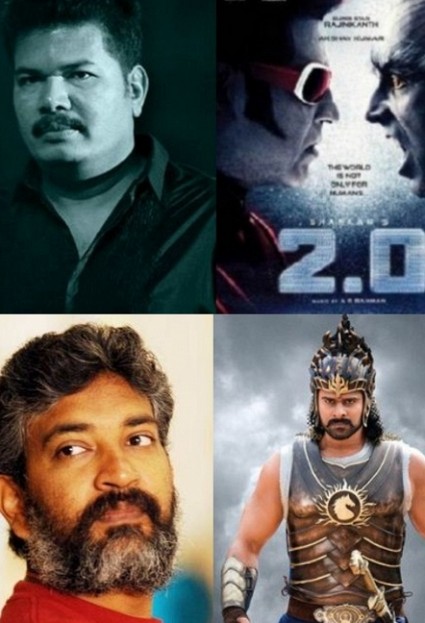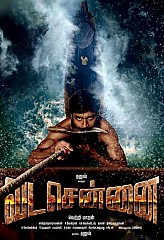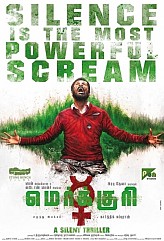

On March 4, the makers of the upcoming Shankar-Rajinikanth extravaganza 2.0 released a VFX making video on YouTube. The video, in which the cast and crew share their experiences and techniques, went on to become viral. The frenzy and curiosity surrounding mammoth productions like 2.0 and Baahubali, and filmmakers like Shankar and S. S. Rajamouli grow bigger than their movies. We are living in an age of big movies made by even bigger directors.
The first thing that comes to mind when we think of the grandeur of a movie is the budget. Until the 2000s, big-budget movies were a once in a blue moon phenomenon in Indian cinema. One major production that was hailed as never-seen-before extravaganza was the 1960 movie, Mughal-E-Azam, which was made on a budget of 1.5 Crore - an exorbitant amount in the '60s for making a movie. But, after the 2000s, the Indian film industry witnessed a number of movies with regional industries like Tamil breaking the stereotyping of Hindi cinema as the sole heir of the legacy of Indian cinema.
Shankar was the flag bearer in this budget race with his Enthiran, for which he was compared to director James Cameron due to its budget of Rs 132 Crore. On the other hand, S. S. Rajamouli had a humble start in the big race with moderately budgeted earlier movies like Magadheera and Eega, both fall in the budget range of 35 to 40 crore.
The real neck and neck race kick-started when Rajamouli swept the Indian film market with the two installments of Baahubali, with a combined budget of Rs 400 crore. Then came Shankar’s turn again. Titled 2.0, the movie has been hailed as India’s most expensive project with its estimated budget exceeding Rs 400 crore. And, the race continues as the most expensive title is taken from 2.0 by the Malayalam project based on Mahabharata, starring Mohanlal, which will be made on a record-breaking 1000 crore!
The budget race is not just a game of figures and announcements, but indicators of changes our movie industries are going through. Interestingly, Indian cinema now can be compared to the Hollywood of the 60s, when the major studios came forward to shell out unseen and unheard amounts of dollars to make spectacles in order to dwarf the threatening and rapidly growing television industry.
But, instead of television, we have a globalised film market with Hollywood and Chinese productions penetrating unexplored potential markets like India. Filmmakers like Shankar and Rajamouli not only realised the looming threat of spectacles from abroad and Bollywood over Indian regional cinema, they chose to take up the challenge by making equally mammoth and grandiose productions, both in style and content. While Shankar went forward in time to come up with futuristic fantasies with an Indian heart, Rajamouli went back in time to deliver mythical tales coated with Indian tradition.
In other words, they created their own folklore and broke all regional and cultural barriers to achieve the status of a pan Indian phenomenon, a rare stature hold by Mani Ratnam for aesthetic reasons rather than the size of the movies. Both Shankar and Rajamouli are keen to cater to the audiences across India, defying regional or linguistic differences. They have also imparted a universal appeal to their movie so that they can work the same magic when dubbed into Hindi, Malayalam, Japanese, or Mandarin.
Besides dreaming big, this new breed of filmmakers is also aware of the new revenue model inevitable to earn back the huge amount of money spent on the production. New markets like China with more than 7,000 screens opens up new vistas for them. Markets like UK, USA, Canada, and GCC countries are also providing excellent sales opportunities for Indian biggies to cash in. Most of these movies are either re-edited, dubbed, or subtitled to make it more appropriate for foreign viewers.
Filmmakers like Shankar are also frequently collaborating with technicians from Hollywood to achieve the international flavour, which is crucial to hit the overseas markets. According to reports, a major share of the total budget of Baahubali and 2.0 went into VFX. These filmmakers and producers do know where to put their money and how to make it come back, in multifold. Shankar and Rajamouli successfully reinvent cinema as spectacle in an Indian context, to counter and race with similar gigantic productions from Hollywood. These visionary filmmakers show things that people rarely see, and they show it really big, to a wider audience. Isn’t it enough to make them bigger than those spectacles?
Behindwoods is not responsible for the views of columnists.

OTHER LATEST BEHINDWOODS COLUMNS
RAGESH DIPU'S OTHER COLUMNS
- Why the long wait for Vada Chennai is worth every moment
- The Mercurial Karthik Subbaraj and Our Reasons to Watch Mercury
- The bold and beautiful women of Andrea Jeremiah
- Theni Fire Accident; the Fact and Fiction of Wanderlust
- Stalkers in and out of cinema; what’s the reality?
- Arya's Enga Veetu Mapillai: A reality check on the reality shows



